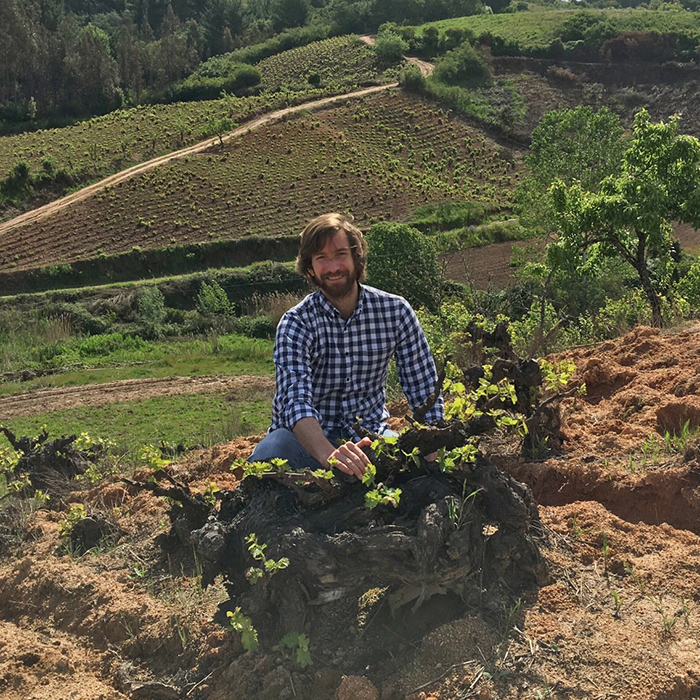Hotting up in Chile
Author: Guest Blogger

Sebastian De Martino in the vineyard
It is telling that most Chileans take their title as a “good-value” wine producer to be a burdensome insinuation that their wines are pedestrian and dull. But that assumption couldn’t be further from the truth with the exciting wine scene in Chile today.
Wine producers are tireless in their quest to conquer the far extremes of Chile with new roots and vines. The traditional parameters of viticulture are being broken on an almost annual basis as producers push further north to the limits of the Atacama Desert, deeper south between the lakes of Patagonia, higher into the Andes mountains and creep closer to the cool, Pacific coastline.
One of the true trailblazers of Chilean wine today is De Martino, which has vinified wines from over 350 different vineyard sites across Chile searching for the most distinct and expressive terroirs. Established in 1934, this family winery is based in the heartland of high-quality Chilean Cabernet Sauvignon – in Maipo – however Cabernet is just one feather to De Martino’s bow.
Winemakers Marcelo Retamal and Eduardo Jordan split their time traversing across large distances in Chile to visit their far-flung vineyards and produce an array of characterful wines. Their latest additions represent some of the most compelling new categories in Chile: mineral and precise Chardonnay from the cool, coastal vineyards and limestone soils of Limarí; rich and wild Malbec from the old vines of Maule; spicy and brooding Syrah from the lofty heights of high altitude Elquí (the highest vineyard in Chile at 2,000 metres); and juicy Cinsault from the granitic hillsides of Itata.
The only element in common between the wide range of wines in De Martino’s portfolio today is the transparent style – having honed their winemaking down to minimal intervention, rarely using new oak or foreign yeasts. And just occasionally ageing in amphora.
The result is wine that speaks of a place, and the many places and varieties on offer reflect the growing diversity that exists in Chile today, making it one of the most exciting New World wine countries.
You can no longer pigeonhole Chile into a handful of varieties, regions or styles; and while you can, luckily for us, still call it “good value”, you certainly cannot call it boring.
Amanda Barnes is travelling around the world in 80 harvests, find out more about her project and follow her journey here.



[…] Read full article on Berry Bros Blog […]